
|
Science is extraordinary. It enables us to discover something new day after day. One unlikely thing that we wouldn't expect to discover though, is a new pigment, which has been described as near-perfect blue. Take a look: |
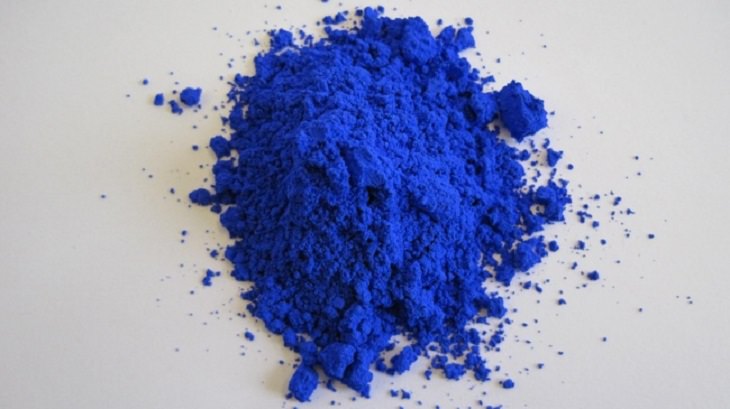 |
|
The accidental discovery was happened upon in a laboratory at Oregon State University. Consequently, it solved a quest that has been sought after for thousands of years by the ancient Egyptians, the Han dynasty in China, the Mayan cultures and many more. In fact, much of recorded human history shows that people around the world have sought inorganic compounds that could be used to paint things blue. However, they seem to have had little success as most had environmental or durability issues. For instance, the cobalt blue color that was developed in France in the early 1800s can be carcinogenic, while Prussian blue can release cyanide. In addition, other blue pigments are not stable when exposed to heat or acidic conditions. But at the OSU, they discovered new compounds based on manganese that should address all these health and environmental concerns. 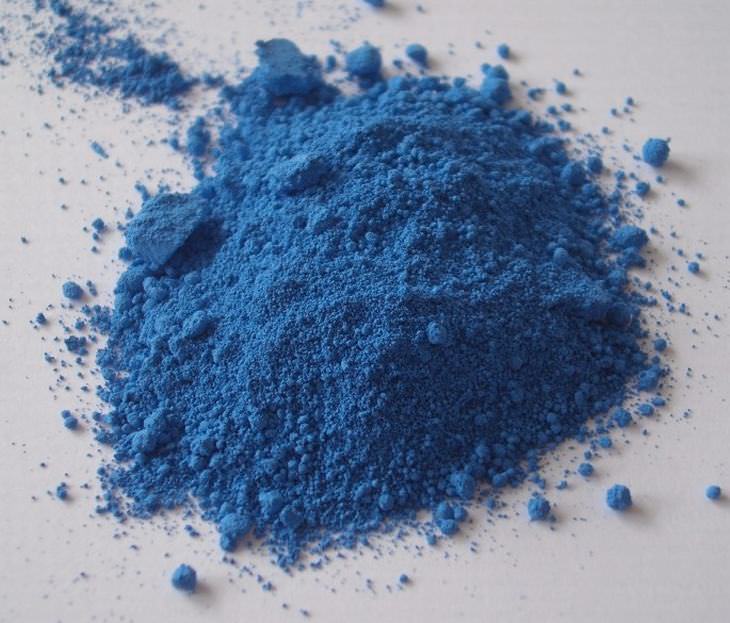
A former blue pigment that doesn't quite match up: Cobalt blue Therefore, not only are they safer to produce, they are more durable and should lead to more environmentally benign blue pigments than any that have been used in the past. They can also survive at extraordinarily high temperatures and don't fade after a week in an acid bath. "Basically, this was an accidental discovery," said Mas Subramanian, the Milton Harris Professor of Materials Science in the OSU Department of Chemistry. " We were exploring manganese oxides for some interesting electronic properties they have. Our work had nothing to do with looking for a pigment. Then one day a graduate student who was working on the project was taking samples out of a very hot furnace while I was walking by, and it was blue, a very beautiful blue,” he said. “I realized immediately that something amazing had happened.” According to the researchers, what had happened was that at about 1,200°C (about 2000°F) the manganese oxide turned into a vivid blue compound that can be used to make a pigment that is able to resist both heat and acid, as well as be environmentally benign and cheap to produce from a readily available mineral. It has even been hailed as the newest and best blue pigment in world history. 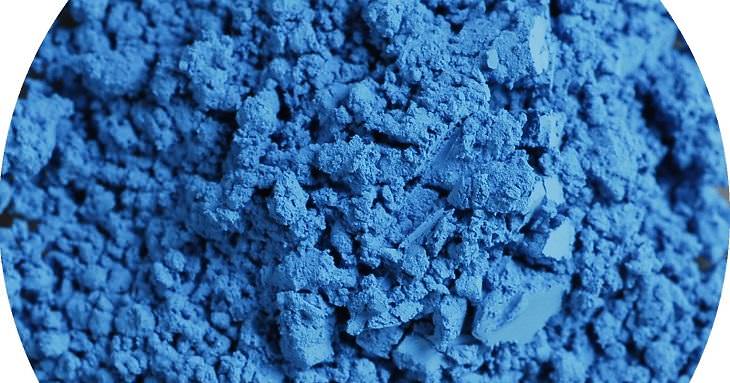
Another previous pigment: Cerulean blue But, what's next for this stunning shade of blue? The pigment will likely find uses in everything from inkjet printers to automobiles, fine art and also house paint. To conclude, Subramanian said that “a lot of the most interesting discoveries are not really planned. There is luck involved, but I also teach my students that you have to stay alert to recognize something when it happens, even if it isn’t what you were looking for. Luck favors the alert mind.” |
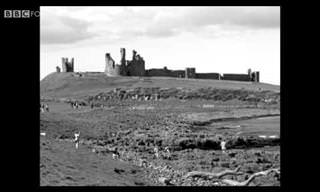 1:09
1:09
Astonishing: Can You See This Monochrome Image in Color?
This must be one of the most impressive brain tricks you will ever try!

Scientists Have Found a 1.5-Million-Strong Penguin Colony
It's not a regular occurrence for a 1.5-million strong penguin colony to be discovered, but that's exactly what happened in Antarctica...

A Simple Blood Test Could Detect Alzheimer Years Earlier
A few years ago, researchers have discovered a gene that could revolutionize how we diagnose Alzheimer's disease - and they found it by asking a simple question: Why do some people's brains succumb to the disease while others don't?

QUIZ: Do You Know About the Great Science Discoveries?
Take our quiz and see if you can recall the great inventions that made our lives better.
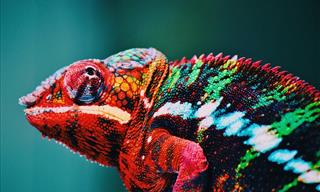
The MOST Fascinating Facts About Colors I’ve Ever Heard!
Colors are ubiquitous, and yet we know surprisingly little about them. Let's fix that by learning these 15 fascinating facts about color
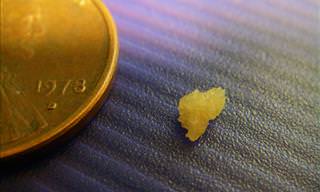
Could This Research Consign Kidney Stones To History?
Researchers have discovered that a compound found in fruit can be used effectively for preventing and treating kidney stones. Read on to find out more.
 24:11
24:11
25 Game-Changing Megaprojects That Will Change Our World
These incredible megaprojects that are set to redefine our world in 2025.

Study: New Link Found Between Parkinson's and the Gut
A recent study has identified gut microbes likely involved and linked them to decreased riboflavin (vitamin B2) and biotin (vitamin B7), suggesting a potential treatment
 36:24
36:24
Ever Wonder How a Steel Locomotor Works?
Let’s take a closer look at the engineering behind these compact workhorses.
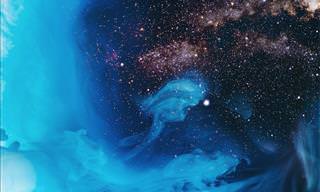 10:50
10:50
Remarkable! This Is How the Universe Developed...
Watch this time lapse of the entire universe - starting with the big bang and culminating in the appearance of homo sapiens.
 9:13
9:13
Want to Travel Quickly Through Space? Try Using a Wormhole
If you want to know what a wormhole is and how it is supposed to work, then you've come to the right place!
 22:35
22:35
Neuralink Update 2025: The Most Incredible Moments
Welcome to our 2025 Neuralink update, where we’ll take you through the most incredible and groundbreaking moments from the past year.

Remembering the Life and Wisdom of Stephen Hawking
Stephen Hawking possessed one of the greatest minds the world has ever seen, but was also impaired by a debilitating disease. Here are his life ant times.

7 Air Pollution Solutions That Will Help Us Breathe Easy
Let's take a look at some global initiatives that have been launched to reduce air pollution levels.

A Quantum Leap? Revolutionary Technique Discovered
Scientists at Singapore University have developed a groundbreaking manufacturing method powered by artificial intelligence that may revolutionize how we understand and create quantum materials at the atomic level.
 19:27
19:27
20 of the Most Infamous Tech Product Flops In History
Here's a look at some of the most infamous and biggest technology failures in recent history.

What is the Troxler Effect and How Does it Affect You?
Learn about Troxler's effect and the optical illusions it creates in life.
 8:12
8:12
The Tallest Statues Compared, Even Those Not Built Yet...
In this 3D animated size comparison, we showcase the tallest statues in the world alongside ambitious future projects.
 7:56
7:56
These 6 Chemical Reactions Changed the Course of History
Although we rarely pay much attention to the chemistry that constantly surrounds us, these 6 reactions changed history.

9 of the Greatest Unsolved Mysteries About the Universe!
The universe has been around for close to 14 billion years, but it still holds many mysteries that continue to perplex scientists. Here's 9 of them!

Learn Chemistry Easily with This Interactive Periodic Table
This interactive table of elements has video lectures about every element, including experiments

Science Proves: These 10 Bible Stories Probably Did Happen
The Bible describes many seemingly supernatural cases, but today, science can show that they might have indeed happened.
 6:25
6:25
Do You Like the Smell of Rain? This Is Why
One of the best things about rain and thunderstorms is that clean fresh smell afterward. But what actually causes that distinct scent?
 5:39
5:39
Why Are Your Ears Ringing? The Causes Explained
Nearly 15% of the human population worldwide are plagued by this strange sensation, but most people don't know the causes behind ringing in the ears...
 15:30
15:30
Experts Are Still Baffled by These Ancient Artifacts
These mysterious relics have left experts puzzled.
 5:16
5:16
Fascinating: How Fast Does Our Brain Operate?
Ever wonder at what speeds our thoughts move?

Science in 2025: 8 Developments That Could Change it All
Here are some of the most exciting trends in science and healthcare to keep an eye on.
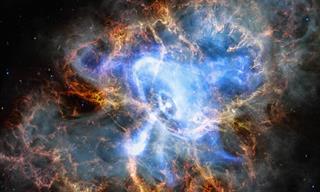
Stunning 2024 Images from the James Webb Space Telescope
Marvel at the new images revealed by the James Webb Space Telescope.
 1:29
1:29
A Must See: White Cells Devouring Bad Bacteria!
A real look at how white cells identify and consume harmful bacteria.
 14:58
14:58
Why IS Fentanyl So Dangerously Addictive?
In this video, we break down what opioids really do to your brain and body, what using them actually feels like, and why so many people are dying from Fentanyl overdoses.

Chronically Late? What Science Has to Say About You
There are 8 positive things that science says about late people that we all need to know.
 8:48
8:48
Fascinating: What Around Us is Invisible?
The Invisible Things that Turn the World...
 1:48
1:48
Boston Dynamic's Robot Does Some Incredible Things...
Boston Dynamics shows us again what her lead robot can do.

8 Ancient Greek Scholars & Their Life-Changing Inventions
The foundations of modern medicine, engineering, biology, and astronomy were set up by these 8 stellar minds more than two thousand years ago.
 50:02
50:02
Take a Trip Through the Universe and Witness its Beauty
Since its launch, the Hubble Telescope returned images of unprecedented beauty of a dynamic and changing universe. Take a look!

10 Tech Products You Must Double-Check Before Buying
Beware! These tech products are most commonly faked.
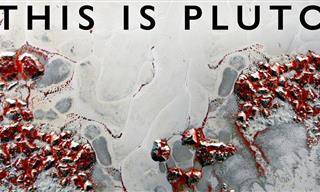 58:37
58:37
Science: Here's Everything We Know About Pluto
Join us as we unravel the mysteries of far off Pluto, 3.7 billion miles from our Sun.
 3:07
3:07
The Speed of Light Visualized in a Magnificent Video
Have you got the patience? Watch, in scale, just how long it takes light to travel from Earth to Mars

13 Forgotten Phone Designs That Were Too Odd to Survive
From pen-shaped dialers to phones that clipped onto your clothes, here’s a look at the most unusual phones ever made.
 8:46
8:46
Science: What is Reality? Dive in and Find Out!
What if everything you see, feel, and experience isn’t real? The simulation argument suggests that our reality might be nothing more than an advanced computer program.
 20:04
20:04
Emotions Explained: The Science Behind How We Feel
Neuroscientist and psychologist Dr. Richard J. Davidson answers some fascinating questions about emotions you would never expect.
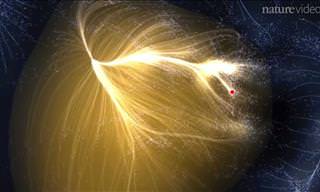 4:11
4:11
This Video Will Show You Where We Are in the Universe!
Where is our galaxy in the known universe? This video will fly with you to ever-larger destinations, showing you our little planet's cosmic address from a very large viewpoint.

Will We Ever Solve Our Universe's Most Complex Mysteries?
Here are 8 of the biggest unsolved mysteries from the world of physics.

Hair Regeneration Could Be Possible With This New Process
Learn about an innovative new study which has revealed a novel treatment for effective hair regeneration.
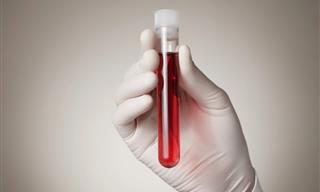
Blood Test Breakthrough Transforms Leukemia Diagnosis
This research demonstrates that rare circulating stem cells in blood carry the same diagnostic information as bone marrow samples, enabling doctors to identify disease progression months before clinical symptoms appear.

Science News: AI-Designed Drugs Move to Human Trials
Isomorphic Labs, is positioning itself to begin human clinical trials of medications designed entirely through artificial intelligence, marking a potentially transformative shift in how we develop life-saving treatments.
 6:15
6:15
K2-18b: The Exoplanet That Might Host Alien Life
Astronomers have detected signs of posisble life in the atmosphere of exoplanet K2-18b.
To enable your Ad-Free Subscription, please fill the fields below
Your subscription was successful, now you can enjoy an ad-free experience!! Note: To make sure you get no ads, please make sure to log in to your account. If you are logged in already, then refresh the page. The subscription can be cancelled at any time.


